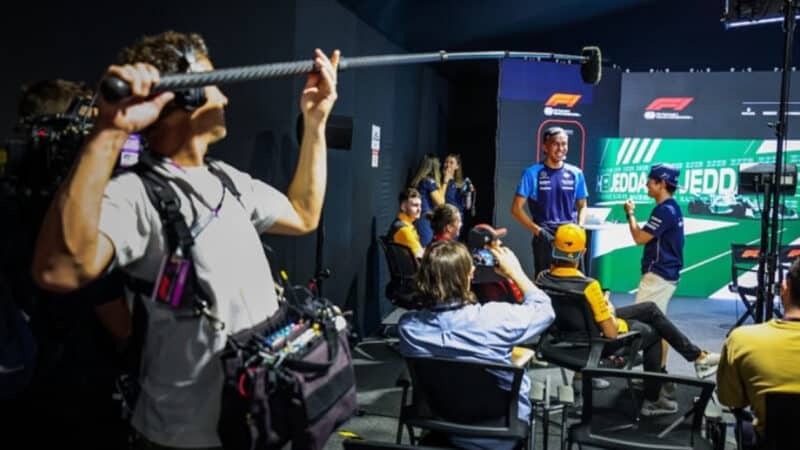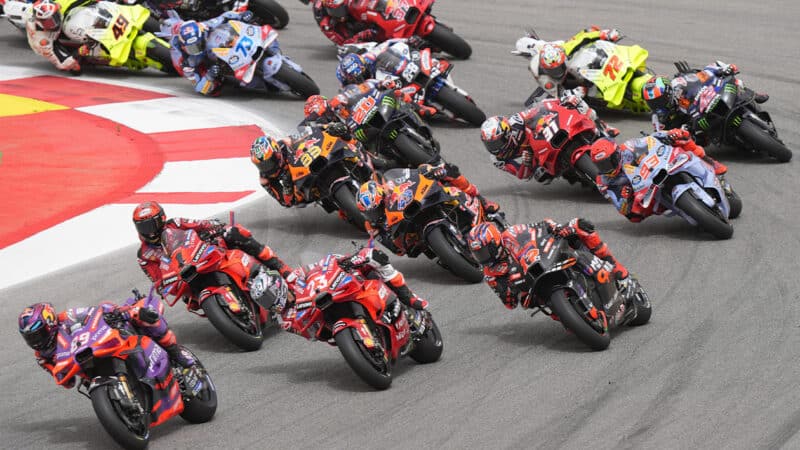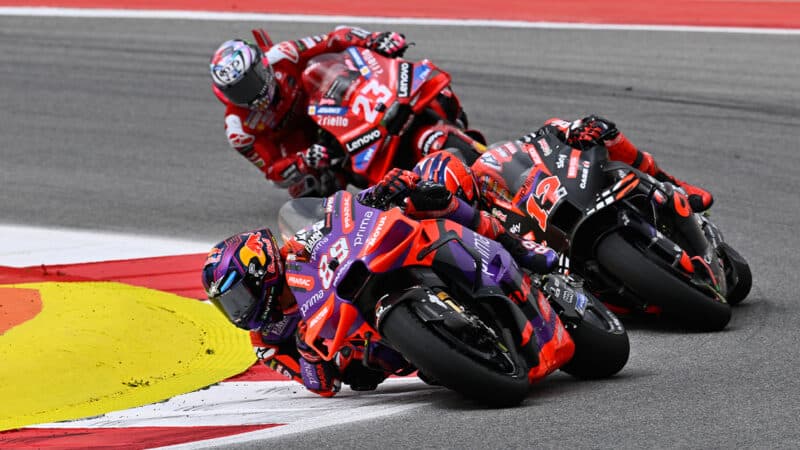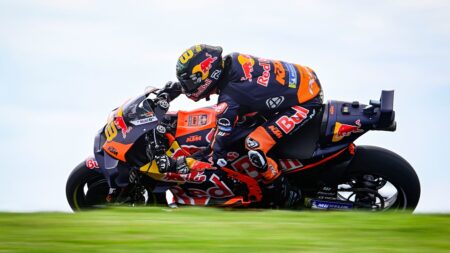Motorcycle racing has two main pillars: entertainment and technology. Both are equally important, nearly. Nowadays, entertainment has to lead the way.
Motorcycle racing’s biggest advantage in the motor sport world is that it’s more exciting to watch than car racing. Therefore it’s essential that the rules are written to keep it that way, rather than to keep the engineers happy.
This doesn’t mean there will be no more engineering and technology. It means the opposite, because if there’s no show there will be fewer fans and if there are fewer fans there will be less money for tech. All that needs to change is that those in charge can control the engineering to keep the racing exciting.
That’s what needs to change in 2027: first, the governance of the tech rules and, second, the tech rules themselves. Ideally, a major reduction in downforce aero, a ban on ground-effect-type aero and a ban on ride-height and holeshot devices.
Fans want to see riders wrestling with their machines, not riding bikes that stick to the road like F1 cars. And they want to see overtaking, which means riders using each other’s slipstreams to help set up overtakes, rather than having to avoid the huge aero wakes created by current machines, which so often prevent overtaking.

F1’s Drive to Survive documentary series – now in its sixth season – has had a huge effect on growing the championship
F1/Netflix
MotoGP is still very close, with most races won by less than a second, but there are many fewer battles than there used to be. In the last GP race in Portugal there wasn’t a single overtake among the top three after the first lap and the season-opening Qatar GP was led by the same rider from the fourth corner of the first lap all the way to the chequered flag.
Sadly, nothing can be done about this until 2027, unless Liberty really starts throwing its weight around. In the meantime, the company needs to start working on something less complicated but equally as important.
A year after Liberty bought F1 it did a deal with Netflix to shoot the first season of Drive to Survive, which covered the 2018 F1 season and was released in early 2019.





